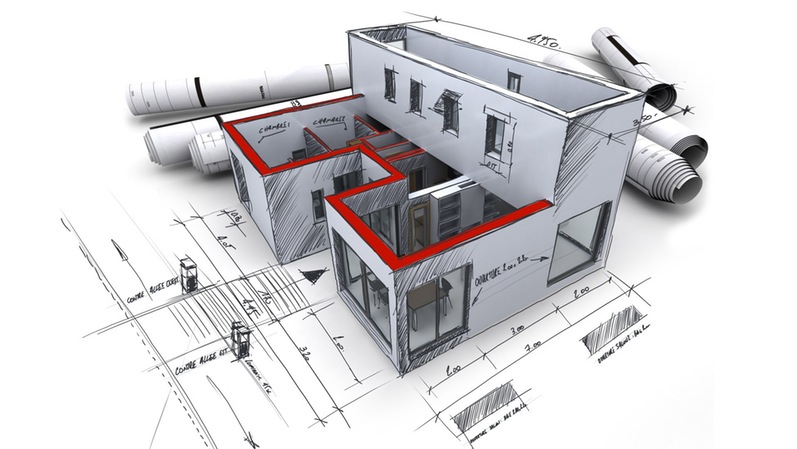Why CDA Architects Are Leaders in Architectural Style and Innovation
Wiki Article
A Thorough Review of Architectural Designs and Their Influence on Modern City Planning and Development
Architectural styles have actually long worked as a mirror to the social worths and technological innovations of their time, playing a crucial function in forming modern city planning and development. From the grandeur of Neoclassicism to the utilitarian approach of Brutalism, each design has introduced unique principles that affect metropolitan appearances and functionality. As modern obstacles occur, consisting of sustainability and community requirements, understanding these historical frameworks comes to be necessary. The resulting discussion not just educates future style practices but also increases pertinent inquiries about the balance between heritage and technology in our developing city landscapes.Historic Overview of Architectural Designs
Throughout background, building styles have advanced in feedback to cultural, technical, and environmental aspects. Each period shows the dominating worths, ideas, and advancements of its time, causing a rich tapestry of design that represents human imagination and adjustment. The old human beings, such as the Egyptians and Greeks, established foundational styles that stressed balance and proportion, offering both functional and visual objectives.As societies transitioned with the Middle Ages, Gothic architecture arised, identified by its verticality and complex describing, matching the spiritual goals of the period. The Renaissance marked a resurgence of timeless ideals, combining art and design in innovative ways that influenced subsequent styles throughout Europe.
The Industrial Transformation presented brand-new materials and building techniques, motivating activities like Innovation, which challenged conventional forms and welcomed simpleness and performance. The 20th century saw a diversification of styles, with Postmodernism responding versus the raw minimalism of its predecessor, integrating historic referrals and diverse components.
Today, architectural styles remain to evolve, driven by globalization and sustainability problems, showing a vibrant interaction in between heritage and advancement. This historic review emphasizes the significance of style as a mirror of social advancement and as a catalyst for city advancement.
Key Architectural Styles Explained
The diversity of architectural styles mirrors the myriad influences that shape our developed setting, each embodying unique features and social values. Trick architectural designs include Classic, Gothic, Baroque, Innovation, and Postmodernism, each representing unique historical contexts and visual ideologies.Timeless style, rooted in old Greece and Rome, highlights balance, proportion, and the usage of columns. In contrast, Gothic architecture, prospering in the center Ages, is characterized by pointed arcs, ribbed safes, and flying buttresses, creating an angelic top quality in basilicas. Baroque design, arising in the 17th century, is noted by splendour, sophisticated decoration, and a dynamic interplay of light and darkness.

Recognizing these designs supplies understanding right into the social stories and technical advancements of their particular periods, highlighting just how style serves not equally as a sanctuary, but as a reflection of social values and goals.
Impact on Urban Preparation
In shaping the development of cities, architectural designs significantly affect urban preparation choices. The selection of building design commonly dictates the appearances, functionality, and overall character of urban atmospheres.Additionally, architectural styles can influence zoning policies and land use plans. Urban planners have to take into consideration the dominating architectural fads when developing areas, making certain that brand-new developments integrate with existing frameworks. This consideration promotes natural city landscapes and improves community identity.
The implementation of specific building styles can also affect socioeconomic variables within a city. For instance, premium contemporary styles might bring in upscale residents and services, leading to gentrification, while a lot more cost effective housing solutions could focus on useful and sustainable styles to accommodate diverse populations. Ultimately, the interplay between architectural styles and urban preparation produces vibrant cities that show both historic context and contemporary requirements, shaping the lived experiences of their inhabitants.
Sustainability and Modern Design
Building designs play a pivotal function in dealing with contemporary obstacles, specifically in the realm of sustainability. As city areas expand and ecological issues intensify, contemporary design progressively embraces sustainable layout concepts that focus on power efficiency, source conservation, click here to read and very little eco-friendly effect.Contemporary building motions, such as biophilic design and eco-friendly design, advocate for structures that balance with their surroundings, making use of all-natural materials and promoting biodiversity - cda architects. These styles often incorporate renewable resource resources, such as photovoltaic panels and wind generators, to minimize dependence on nonrenewable fuel sources and lower carbon footprints
Furthermore, the integration of advanced innovations, such as smart structure systems, boosts energy monitoring, optimizing source use while ensuring resident convenience. Innovative water management approaches, consisting of rain harvesting and greywater recycling, additional add to lasting city settings.
Notably, sustainability prolongs beyond ecological issues; it encompasses social and financial dimensions also. By cultivating community health and promoting inclusivity, contemporary architectural designs line up with sustainable development goals. Subsequently, the development of building techniques continues to shape durable cities that not just fulfill the demands of today however likewise guard the future for generations ahead.
Neighborhood Interaction in Style
Neighborhood engagement in style functions as an essential bridge in between designers and the populaces they serve, guaranteeing that the built atmosphere mirrors the needs and desires of its customers. This joint process invites area participants to contribute their understandings and choices, promoting a sense of ownership and obligation towards the areas they occupy.Effective community interaction utilizes various approaches, such as workshops, surveys, and public discussion forums, to gather diverse viewpoints (cda architects). These techniques promote a two-way discussion, allowing architects to recognize regional contexts while equipping locals to articulate their worries and desires. This inclusivity not only boosts the style quality but additionally advertises social equity by dealing with the one-of-a-kind difficulties encountered by marginalized groups

Verdict
Building designs have actually greatly influenced modern city preparation and advancement, reflecting developing cultural and technical contexts. As cities continue to grow and adapt, the recurring dialogue in between architectural heritage and modern find more style principles will continue to be necessary in developing inclusive, lively rooms that boost high quality of life and promote social equity.Report this wiki page